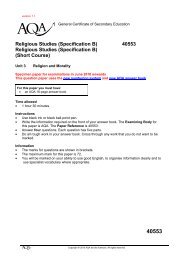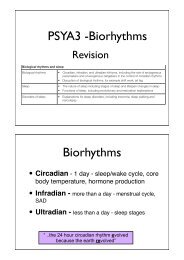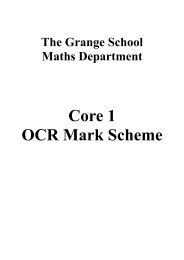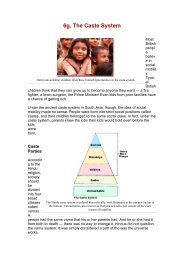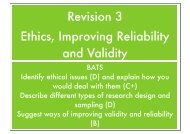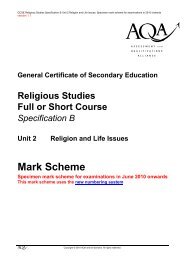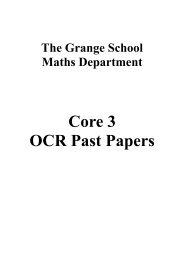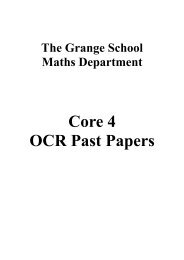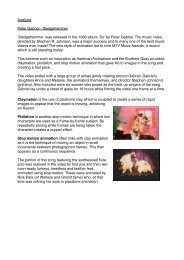C2 Past Paper Booklet - The Grange School Blogs
C2 Past Paper Booklet - The Grange School Blogs
C2 Past Paper Booklet - The Grange School Blogs
You also want an ePaper? Increase the reach of your titles
YUMPU automatically turns print PDFs into web optimized ePapers that Google loves.
June 200736 (a) (i) Find x(x 2 − 4) dx. [3]6(ii) Hence evaluate x(x 2 − 4) dx. [2]1(b) Find 6 dx. [3]x3 7 (a) In an arithmetic progression, the first term is 12 and the sum of the first 70 terms is 12 915. Findthe common difference. [4](b)In a geometric progression, the second term is −4 and the sum to infinity is 9. Find the commonratio. [7]8<strong>The</strong> diagram shows a triangle ABC, where angle BAC is 0.9 radians. BAD is a sector of the circlewith centre A and radius AB.(i) <strong>The</strong> area of the sector BAD is 16.2 cm 2 . Show that the length of AB is 6 cm. [2](ii) <strong>The</strong> area of triangle ABC is twice the area of sector BAD. Find the length of AC. [3](iii) Find the perimeter of the region BCD. [6]9 <strong>The</strong> polynomial f(x) is given byf(x) =x 3 + 6x 2 + x − 4.(i) (a) Show that (x + 1) is a factor of f(x). [1](b) Hence find the exact roots of the equation f(x) =0. [6](ii) (a)Show that the equation2 log 2(x + 3)+log 2x − log 2(4x + 2) =1can be written in the form f(x) =0. [5](b)Explain why the equation2 log 2(x + 3)+log 2x − log 2(4x + 2) =1has only one real root and state the exact value of this root. [2]© OCR 2007 4722/01 Jun07



